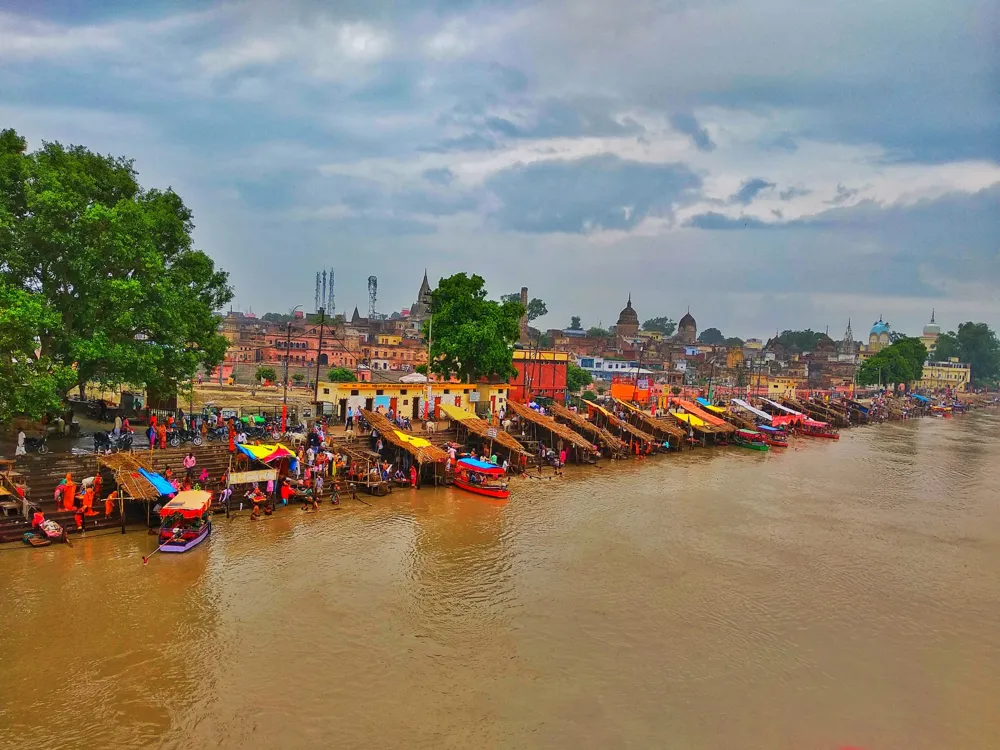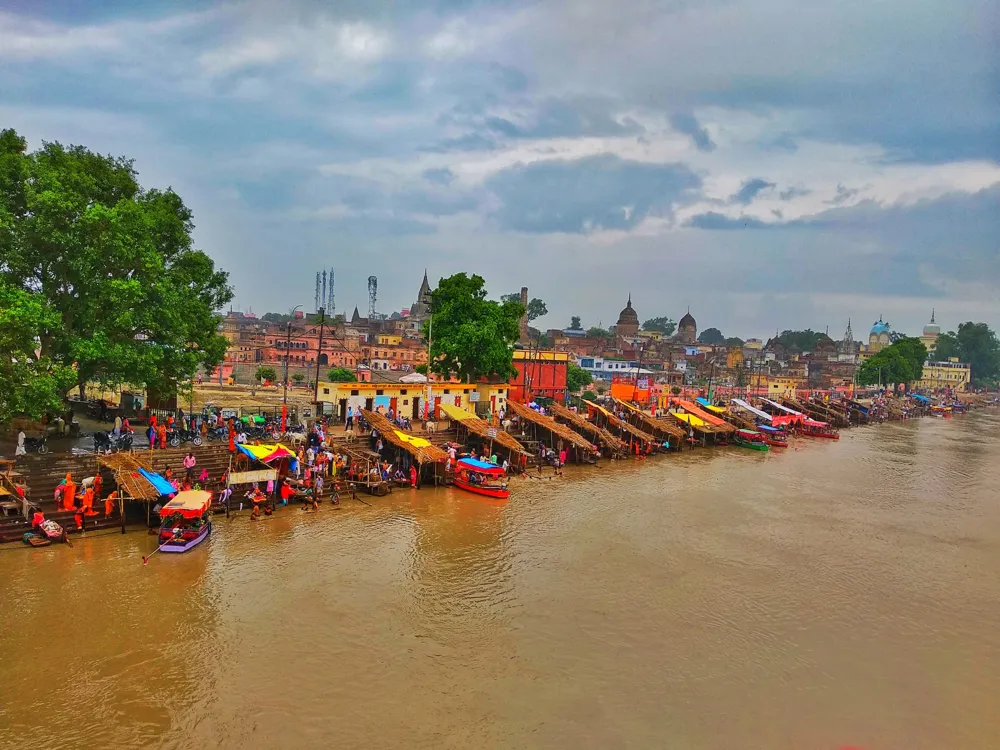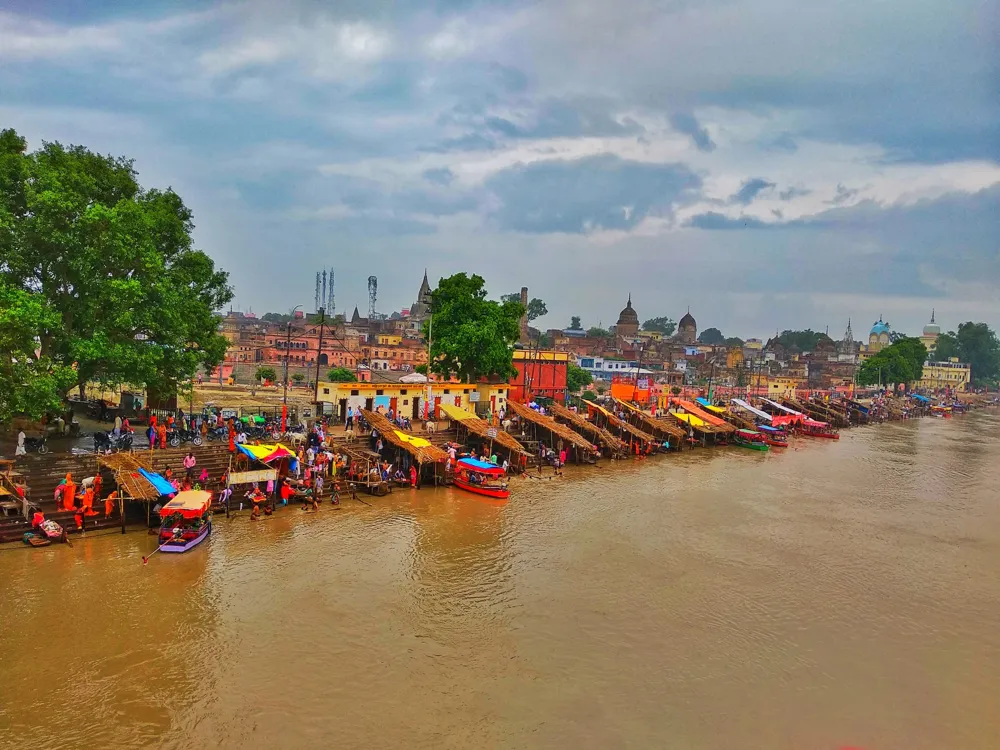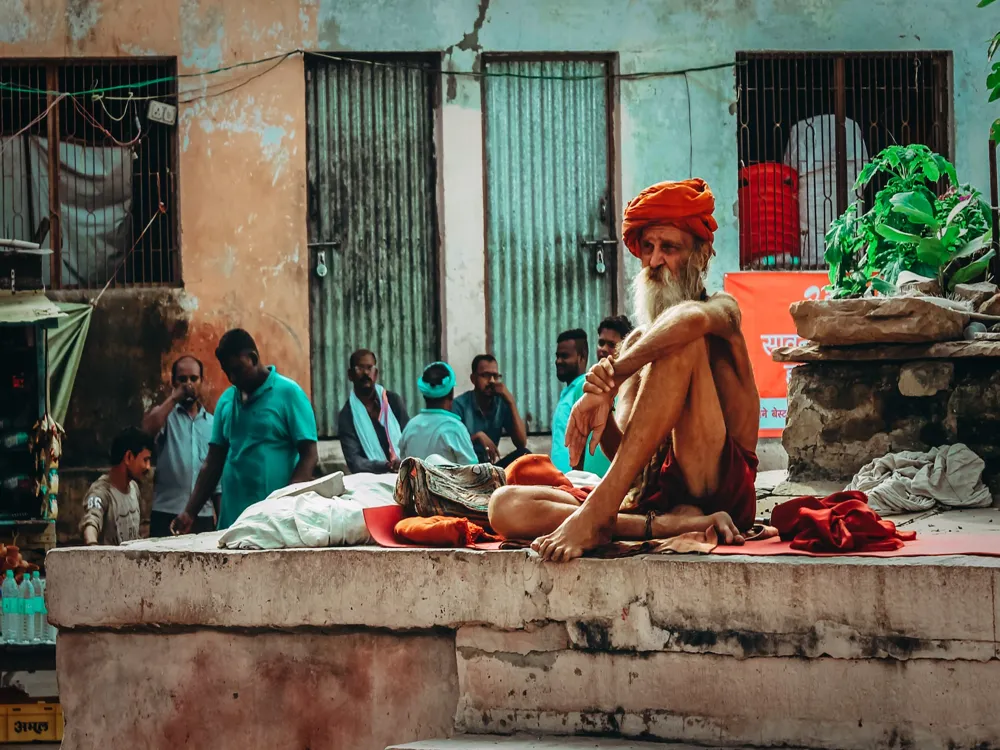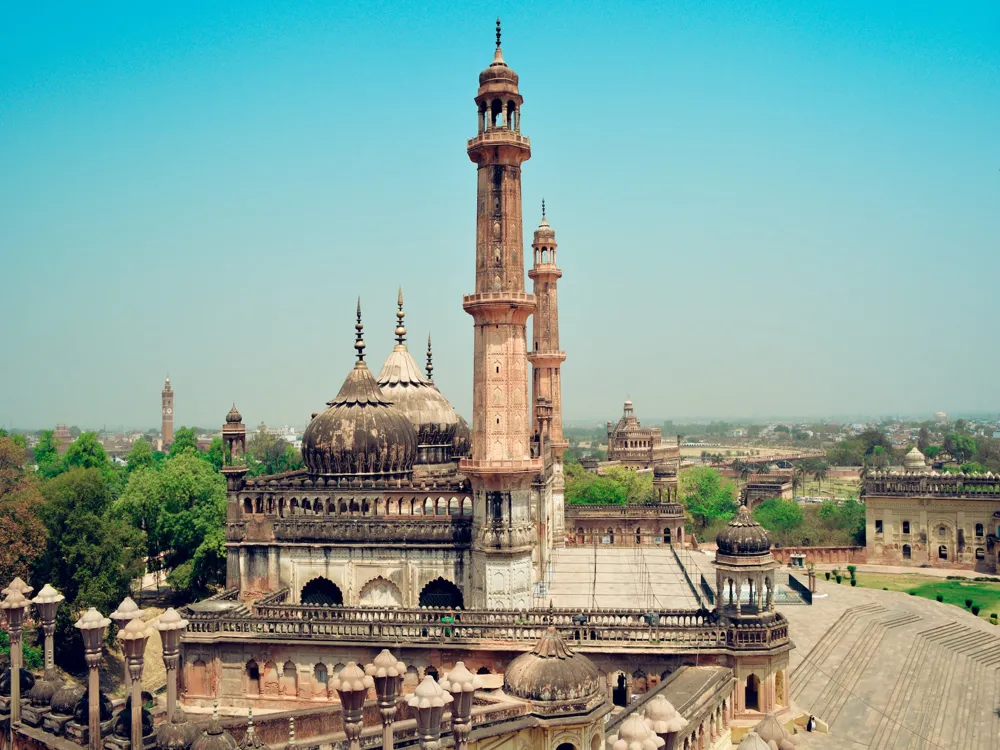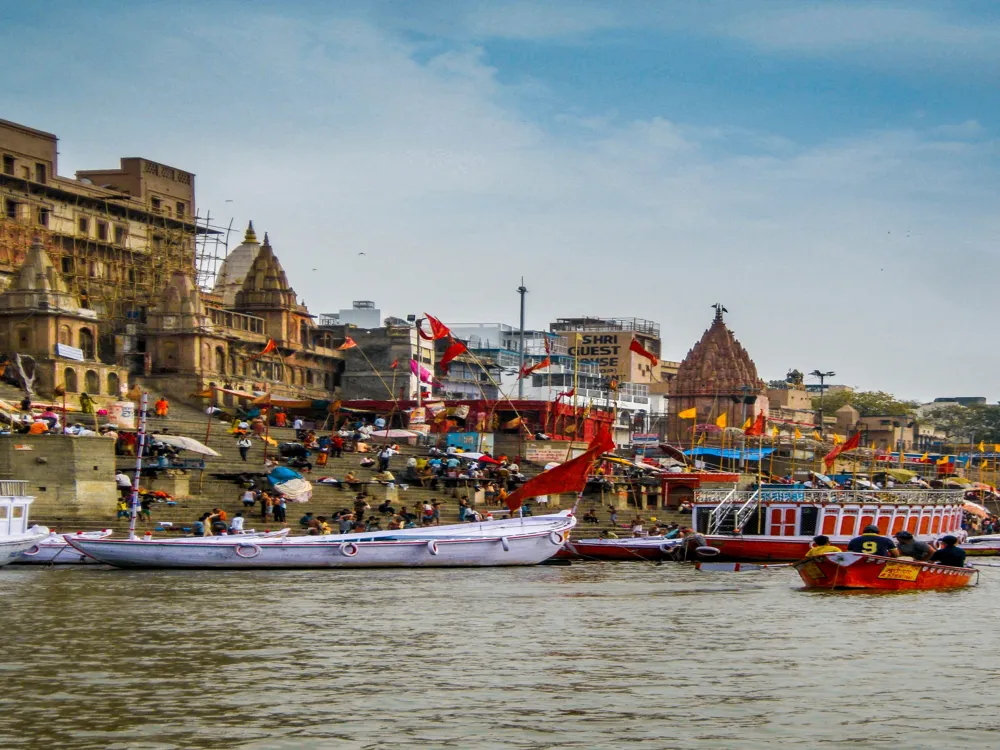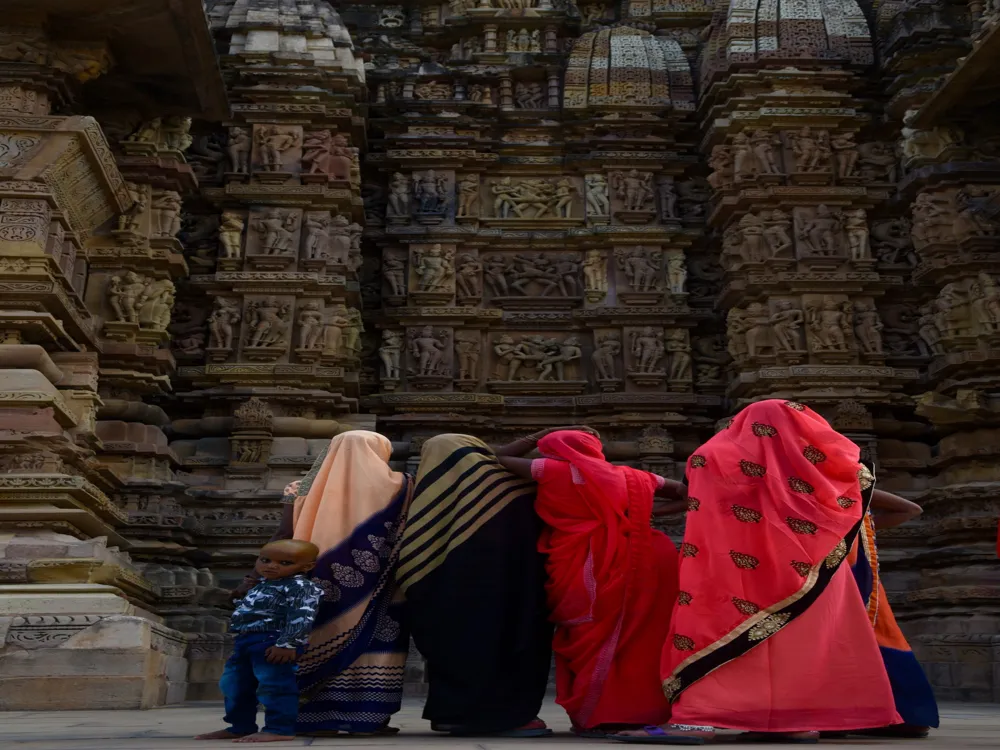Nestled in the heart of Ayodhya, Uttar Pradesh, Raja Mandir stands as a lamp of artistic and literal significance. This ancient tabernacle, steeped in the rich heritage of India, draws callers from across the globe, enchanted by its literal applicability and spiritual air. Ayodhya, a megacity deeply intertwined with the grand Ramayana, offers a unique mix of tradition, history, and church, with Raja Mandir at its core. The Raja Mandir in Ayodhya is a masterpiece of Indian architecture, embodying centuries of artistic elaboration and cultural expression. Its design reflects a mix of colorful architectural styles that have evolved over time, as told by different dynasties and autocrats who left their mark on this sacred structure. Visitors should dress modestly and remove their shoes before entering the temple. It's also important to observe silence or speak softly within the temple premises. Callers should dress modestly and remove their shoes before entering the tabernacle. It's also important to observe silence or speak vocally within the tabernacle demesne. The ideal time to visit Raja Mandir is during the cooler months from October to March. The tabernacle is also beautifully decorated during Hindu carnivals, offering a unique experience. Consider taking a guided tour to gain deeper insights into the temple's history and architecture. Engage hypercritically with the locals and tabernacle authorities. It's also a good practice to contribute or buy immolations from original merchandisers to support the community. Raja Mandir is easily accessible from the colorful corridor of India. The nearest airport is in Lucknow, about 135 kilometers from Ayodhya. Regular trains and motorcars connect Ayodhya to major metropolises like Delhi, Mumbai, and Kolkata. Within Ayodhya, original transport such as buses, cabs, and hacks can take you to Raja Mandir. For a more traditional experience, consider taking a gharry or walking through the vibrant thoroughfares of Ayodhya. READ MORE:-Overview of Raja Mandir, Ayodhya, Uttar Pradesh
The tabernacle's origins trace back centuries, playing a vital part in the religious geography of India. Over the years, Raja Mandir has witnessed multitudinous emendations and restorations, each adding a subcaste to its formerly rich shade. moment, it stands not just as a place of deification but as a testament to the adaptability and enduring nature of Indian culture and religious traditions.
As you step onto the tabernacle grounds, you're incontinently enveloped by an air of tranquility and reverence. The tabernacle's armature, a splendid illustration of ancient Indian artifice, showcases intricate busts and detailed puppets that recite tales from Hindu tradition. The serene air is punctuated by gentle chants and bells, creating a terrain conducive to contemplation.
The Tabernacle complex is more than just a structure; it's a living, breathing reality that resonates with the devotion of its callers. Pilgrims and excursionists likewise find themselves drawn to its saintship, seeking blessings, or simply reposing in its peaceful grasp. The Raja Mandir isn't just a destination; it's an experience, a trip into the heart of India's spiritual morality.Architecture of Raja Mandir
The tabernacle's layout follows the traditional Vastu Shastra principles, harmonizing with the natural rudiments and directional alignments. The main sanctum, or Garbhagriha, houses the deity and is designed to be the spiritual core of the tabernacle. girding it are colorful halls and chambers, each serving a specific purpose, be it for prayer, contemplation, or religious converse.
One of the most striking features of Raja Mandir is its intricate busts and puppets. These artworks aren't just ornamental rudiments; they're visual narratives of Hindu tradition and epics. Professed crafters have painstakingly sculpted scenes from the Ramayana and Mahabharata, along with delineations of gods and goddesses, in gravestone and wood, bringing them to life.
The tabernacle's towering becket, or Shikhara, is another architectural phenomenon. Adorned with atomic busts and motifs, it soars overhead, emblematizing the ascent to the godly. The tabernacle complex also features pillared halls, or Mandapas, with each pillar telling a story of its own, stretched with busts of divinities, hops, and musicians.
The use of original accoutrements, combined with traditional construction methods, has assured that the tabernacle not only reflects indigenous cultural sensibilities but also blends seamlessly with its girding terrain. The overall effect is one of admiration and wonder, as the tabernacle's armature takes you on a trip through India's rich cultural heritage.Tips for Visiting Raja Mandir
Respect the Cultural Norms
Best Time to Visit
Photography Guidelines
Guided Tours
Local Etiquettes
How to Reach Raja Mandir
Raja Mandir
Ayodhya
Uttar Pradesh
₹ 9,500 onwards
View ayodhya Packages
Weather :
Tags : Temple
Timings : Sunrise - Sunset
Time Required : 1 - 2 hrs
Entry Fee : No Entry Fee
Planning a Trip? Ask Your Question
Ayodhya Travel Packages
View All Packages For Ayodhya
Top Hotel Collections for Ayodhya

Private Pool

Luxury Hotels

5-Star Hotels

Pet Friendly
Top Hotels Near Ayodhya
Other Top Ranking Places In Ayodhya
View All Places To Visit In ayodhya
View ayodhya Packages
Weather :
Tags : Temple
Timings : Sunrise - Sunset
Time Required : 1 - 2 hrs
Entry Fee : No Entry Fee
Planning a Trip? Ask Your Question
Ayodhya Travel Packages
View All Packages For Ayodhya
Top Hotel Collections for Ayodhya

Private Pool

Luxury Hotels

5-Star Hotels

Pet Friendly







